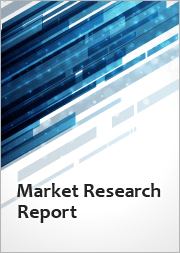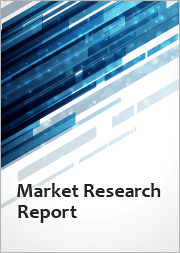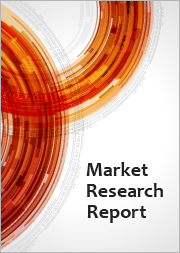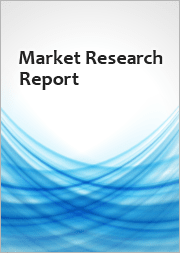
|
시장보고서
상품코드
1619218
동물용 백신 시장 규모, 점유율, 성장 분석 : 제품별, 투여 경로별, 지역별 - 산업별 예측(2024-2031년)Animal Vaccines Market Size, Share, Growth Analysis, By Product (Attenuated Live Vaccines, Inactivated Vaccines), By Route of Administration (Subcutaneous, Intramuscular), By Region - Industry Forecast 2024-2031 |
||||||
세계의 동물용 백신 시장 규모는 2022년에 124억 달러로 평가되며, 2023년 135억 9,000만 달러에서 2031년에는 283억 달러로 성장하며, 예측 기간 중(2024-2031년) CAGR은 9.60%로 성장할 전망입니다.
가축 인구의 증가와 함께 동물 질병의 발생률이 상승하고 있으며, 이는 반추동물 백신, 특히 소용 백신의 세계 보급을 크게 촉진하고 있습니다. 가축은 육류, 우유, 양모, 가죽 생산에 필수적이기 때문에 광견병, 말 인플루엔자, 구제역 등 가축의 건강과 생산성을 저해하는 질병을 예방하기 위한 백신 접종이 시급한 실정입니다. 식량안보에 대한 우려가 커지고 축산업이 급증하면서 백신에 대한 수요가 더욱 증가하고 있습니다. 인구 증가와 함께 소비자의 기호가 진화하면서 축산물에 대한 욕구도 증가하고 있습니다. 또한 백신 기술의 발전과 빈번한 질병 발생은 시장 역학을 재구성하여 가축 백신 분야의 지속적인 확장에 기여하고 있습니다.
목차
서론
- 조사의 목적
- 조사 범위
- 정의
조사 방법
- 정보 조달
- 2차 데이터와 1차 데이터 방법
- 시장 규모 예측
- 시장의 전제조건과 제한
개요
- 세계 시장 전망
- 공급과 수요의 동향 분석
- 부문별 기회 분석
시장 역학과 전망
- 시장 개요
- 시장 규모
- 시장 역학
- 촉진요인과 기회
- 억제요인과 과제
- Porter의 산업 분석과 영향
- 경쟁 기업 간 경쟁 관계
- 대체품의 위협
- 바이어의 교섭력
- 신규 진출업체의 위협
- 공급 기업의 교섭력
주요 시장 인사이트
- 주요 성공 요인
- 경쟁의 정도
- 주요 투자 기회
- 시장 에코시스템
- 시장의 매력 지수(2023년)
- PESTEL 분석
- 거시경제 지표
- 밸류체인 분석
- 가격 분석
- 기술의 진보
- 규제 상황
- 특허 분석
- 사례 연구
동물용 백신 시장 규모 : 제품별
- 시장 개요
- 약독생백신
- 불활화 백신
- 서브유닛 백신
- DNA 백신
- 재조합 백신
동물용 백신 시장 규모 : 투여 경로별
- 시장 개요
- 피하
- 근육내
- 비강내
동물용 백신 시장 규모 : 동물 유형별
- 시장 개요
- 가축
- 가금
- 어류
- 반추동물
- 돼지
- 컴퍼니언
- 개
- 고양이과
- 기타
동물용 백신 시장 규모 : 유통 채널별
- 시장 개요
- 소매
- E-Commerce
- 병원·클리닉 약국
동물용 백신 시장 규모 : 지역별
- 북미
- 미국
- 캐나다
- 유럽
- 영국
- 독일
- 스페인
- 프랑스
- 이탈리아
- 기타 유럽 지역
- 아시아태평양
- 중국
- 인도
- 일본
- 한국
- 기타 아시아태평양
- 라틴아메리카
- 브라질
- 기타 라틴아메리카 지역
- 중동 및 아프리카
- GCC 국가
- 남아프리카공화국
- 기타 중동 및 아프리카
경쟁 정보
- 상위 5사의 비교
- 주요 기업의 시장 포지셔닝(2023년)
- 주요 시장 기업이 채택한 전략
- 시장의 최근 동향
- 기업의 시장 점유율 분석(2023년)
- 주요 기업의 기업 개요
- 회사 개요
- 제품 포트폴리오 분석
- 부문별 점유율 분석
- 매출의 전년대비 비교(2021-2023)
주요 기업 개요
- Zoetis
- Merck & Co., Inc.
- Boehringer Ingelheim International GmbH
- Elanco Animal Health Inc.
- Bayer AG
- Virbac
- Ceva
- HIPRA
- Hester Biosciences Limited
- Biogenesis Bago
- Vaxxinova
- IDT Biologika GmbH
- Bimeda Animal Health
- BravoVax
- MSD Animal Health
- Agrovet Market Animal Health
- Anicon Labor GmbH
결론과 권장사항
KSA 25.01.13Global Animal Vaccines Market size was valued at USD 12.4 billion in 2022 and is poised to grow from USD 13.59 billion in 2023 to USD 28.30 billion by 2031, growing at a CAGR of 9.60% during the forecast period (2024-2031).
The rising incidence of animal diseases, coupled with a growing livestock population, is significantly boosting the global acceptance of ruminant vaccines, especially for cattle. With animals being vital for producing meat, milk, wool, and leather, there is an increased urgency for vaccination to prevent diseases like rabies, equine influenza, and foot-and-mouth disease that compromise animal health and productivity. The escalating concerns surrounding food security and the surge in animal husbandry practices are further driving demand for these vaccines. As consumer preferences evolve alongside population growth, the appetite for livestock products intensifies. Moreover, advancements in vaccine technology and frequent disease outbreaks are reshaping market dynamics, contributing to continued expansion in the livestock vaccination sector.
Top-down and bottom-up approaches were used to estimate and validate the size of the Global Animal Vaccines market and to estimate the size of various other dependent submarkets. The research methodology used to estimate the market size includes the following details: The key players in the market were identified through secondary research, and their market shares in the respective regions were determined through primary and secondary research. This entire procedure includes the study of the annual and financial reports of the top market players and extensive interviews for key insights from industry leaders such as CEOs, VPs, directors, and marketing executives. All percentage shares split, and breakdowns were determined using secondary sources and verified through Primary sources. All possible parameters that affect the markets covered in this research study have been accounted for, viewed in extensive detail, verified through primary research, and analyzed to get the final quantitative and qualitative data.
Global Animal Vaccines Market Segmental Analysis
Global Animal Vaccines Market is segmented by Product, Route of Administration, Animal Type, Distribution Channel, and region. Based on Product, the market is segmented into Attenuated Live Vaccines, Inactivated Vaccines, Subunit Vaccines, DNA Vaccines, and Recombinant Vaccines. Based on Route of Administration, the market is segmented into Subcutaneous, Intramuscular, and Intranasal. Based on Animal Type, the market is segmented into Livestock, and Companion Based on Distribution Channel, the market is segmented into Retail, E-Commerce, and Hospital/ Clinic Pharmacy. Based on region, the market is segmented into North America, Europe, Asia Pacific, Latin America and Middle East & Africa.
Driver of the Global Animal Vaccines Market
The Global Animal Vaccines market is significantly driven by the rising incidence of zoonotic diseases, which have a detrimental impact on human health and underscore the urgent need for effective animal immunization. The escalating threat posed by emerging and exotic diseases compromises not only human and animal well-being but also jeopardizes food security. With increasing human and animal populations, coupled with environmental changes and the globalization of trade and travel, there are heightened risks for pathogen transmission across species. Furthermore, advancements in technology have transformed animal vaccination practices, leading to substantial R&D breakthroughs. Traditional vaccination methods have paved the way for the development of recombinant vaccines, which offer enhanced safety benefits by eliminating exposure to live pathogens. These dynamics collectively drive the demand for innovative animal vaccines in today's market.
Restraints in the Global Animal Vaccines Market
The Global Animal Vaccines market faces significant constraints, particularly in developing regions such as Africa, Asia, and Latin America, where an estimated 600-900 million smallholder farmers manage livestock. The adoption of animal vaccinations among these farmers is hindered by multiple challenges, including a lack of awareness regarding the advantages of vaccination, financial limitations that prevent access to immunization products, and the inadequate supply chain that restricts availability. As a result, many livestock animals owned by smallholder farmers succumb to various diseases, leading to further economic hardships for these communities. Governments and organizations are implementing strategies to enhance the accessibility, availability, and affordability of animal vaccination to improve livestock health in these areas.
Market Trends of the Global Animal Vaccines Market
The Global Animal Vaccines market is poised for substantial growth, driven by a surge in public-private funding for targeted research initiatives and a heightened prevalence of animal diseases. Technological advancements are facilitating product innovations, presenting lucrative opportunities for market players. Future growth will be further supported by increasing strategic alliances, enhanced internet penetration, and heightened concerns regarding zoonotic diseases. Additionally, advancements in diagnostics and therapeutics in developing regions, coupled with rising per capita healthcare spending, will amplify market demand. Collectively, these factors are positioning the animal vaccines sector as a critical market trend in the evolving landscape of veterinary healthcare.
Table of Contents
Introduction
- Objectives of the Study
- Scope of the Report
- Definitions
Research Methodology
- Information Procurement
- Secondary & Primary Data Methods
- Market Size Estimation
- Market Assumptions & Limitations
Executive Summary
- Global Market Outlook
- Supply & Demand Trend Analysis
- Segmental Opportunity Analysis
Market Dynamics & Outlook
- Market Overview
- Market Size
- Market Dynamics
- Driver & Opportunities
- Restraints & Challenges
- Porters Analysis & Impact
- Competitive rivalry
- Threat of substitute
- Bargaining power of buyers
- Threat of new entrants
- Bargaining power of suppliers
Key Market Insights
- Key Success Factors
- Degree of Competition
- Top Investment Pockets
- Market Ecosystem
- Market Attractiveness Index, 2023
- PESTEL Analysis
- Macro-Economic Indicators
- Value Chain Analysis
- Pricing Analysis
- Technological Advancement
- Regulatory Landscape
- Patent Analysis
- Case Studies
Global Animal Vaccines Market Size by Product & CAGR (2024-2031)
- Market Overview
- Attenuated Live Vaccines
- Inactivated Vaccines
- Subunit Vaccines
- DNA Vaccines
- Recombinant Vaccines
Global Animal Vaccines Market Size by Route of Administration & CAGR (2024-2031)
- Market Overview
- Subcutaneous
- Intramuscular
- Intranasal
Global Animal Vaccines Market Size by Animal Type & CAGR (2024-2031)
- Market Overview
- Livestock
- Poultry
- Aqua
- Ruminants
- Swine
- Companion
- Canine
- Feline
- Others
Global Animal Vaccines Market Size by Distribution Channel & CAGR (2024-2031)
- Market Overview
- Retail
- E-Commerce
- Hospital/ Clinic Pharmacy
Global Animal Vaccines Market Size & CAGR (2024-2031)
- North America, (Product, Route of Administration, Animal Type, Distribution Channel)
- US
- Canada
- Europe, (Product, Route of Administration, Animal Type, Distribution Channel)
- UK
- Germany
- Spain
- France
- Italy
- Rest of Europe
- Asia-Pacific, (Product, Route of Administration, Animal Type, Distribution Channel)
- China
- India
- Japan
- South Korea
- Rest of Asia Pacific
- Latin America, (Product, Route of Administration, Animal Type, Distribution Channel)
- Brazil
- Rest of Latin America
- Middle East & Africa, (Product, Route of Administration, Animal Type, Distribution Channel)
- GCC Countries
- South Africa
- Rest of Middle East & Africa
Competitive Intelligence
- Top 5 Player Comparison
- Market Positioning of Key Players, 2023
- Strategies Adopted by Key Market Players
- Recent Developments in the Market
- Company Market Share Analysis, 2023
- Company Profiles of All Key Players
- Company Details
- Product Portfolio Analysis
- Company's Segmental Share Analysis
- Revenue Y-O-Y Comparison (2021-2023)
Key Company Profiles
- Zoetis
- Company Overview
- Business Segment Overview
- Financial Updates
- Key Developments
- Merck & Co., Inc.
- Company Overview
- Business Segment Overview
- Financial Updates
- Key Developments
- Boehringer Ingelheim International GmbH
- Company Overview
- Business Segment Overview
- Financial Updates
- Key Developments
- Elanco Animal Health Inc.
- Company Overview
- Business Segment Overview
- Financial Updates
- Key Developments
- Bayer AG
- Company Overview
- Business Segment Overview
- Financial Updates
- Key Developments
- Virbac
- Company Overview
- Business Segment Overview
- Financial Updates
- Key Developments
- Ceva
- Company Overview
- Business Segment Overview
- Financial Updates
- Key Developments
- HIPRA
- Company Overview
- Business Segment Overview
- Financial Updates
- Key Developments
- Hester Biosciences Limited
- Company Overview
- Business Segment Overview
- Financial Updates
- Key Developments
- Biogenesis Bago
- Company Overview
- Business Segment Overview
- Financial Updates
- Key Developments
- Vaxxinova
- Company Overview
- Business Segment Overview
- Financial Updates
- Key Developments
- IDT Biologika GmbH
- Company Overview
- Business Segment Overview
- Financial Updates
- Key Developments
- Bimeda Animal Health
- Company Overview
- Business Segment Overview
- Financial Updates
- Key Developments
- BravoVax
- Company Overview
- Business Segment Overview
- Financial Updates
- Key Developments
- MSD Animal Health
- Company Overview
- Business Segment Overview
- Financial Updates
- Key Developments
- Agrovet Market Animal Health
- Company Overview
- Business Segment Overview
- Financial Updates
- Key Developments
- Anicon Labor GmbH
- Company Overview
- Business Segment Overview
- Financial Updates
- Key Developments



















